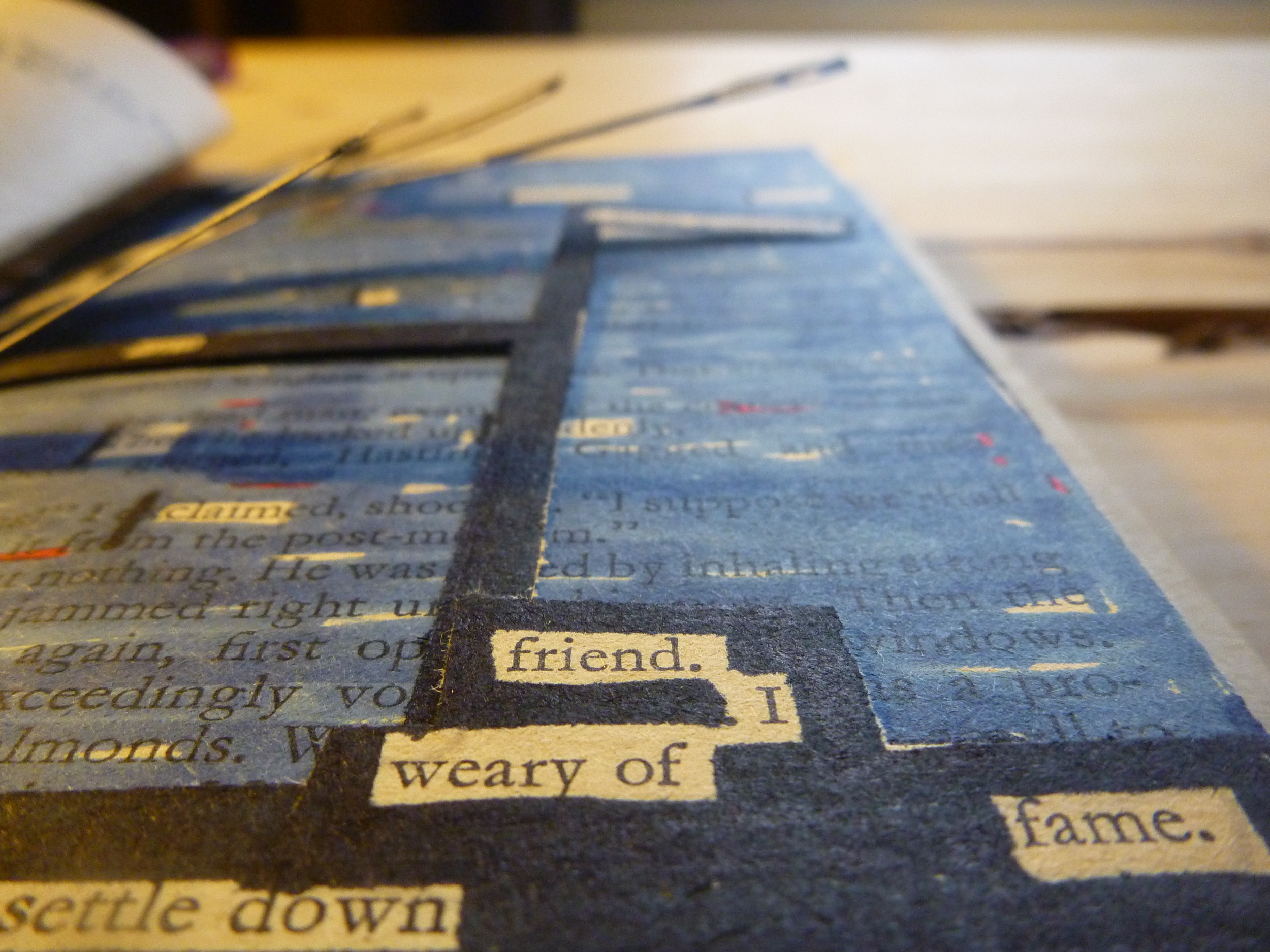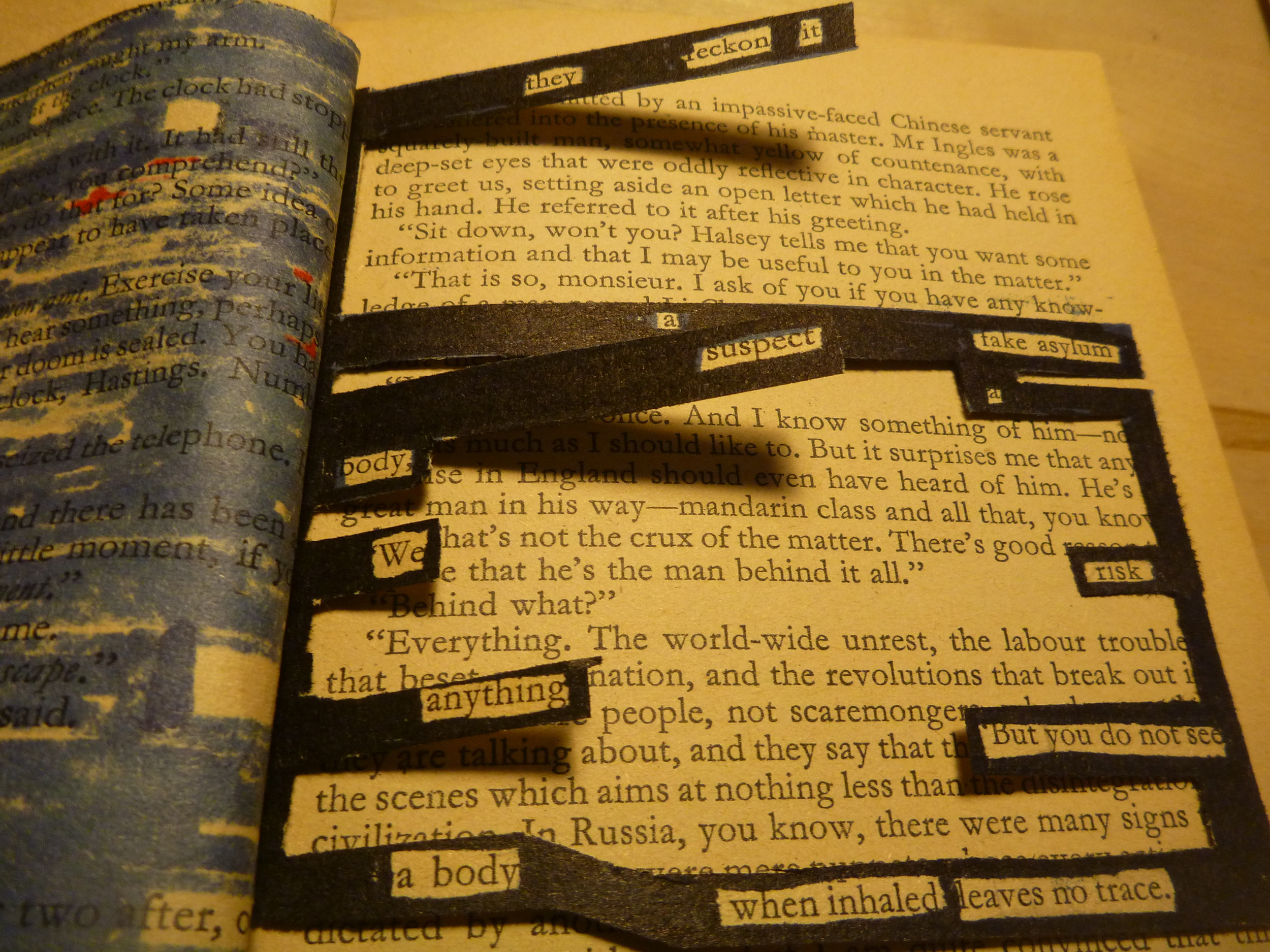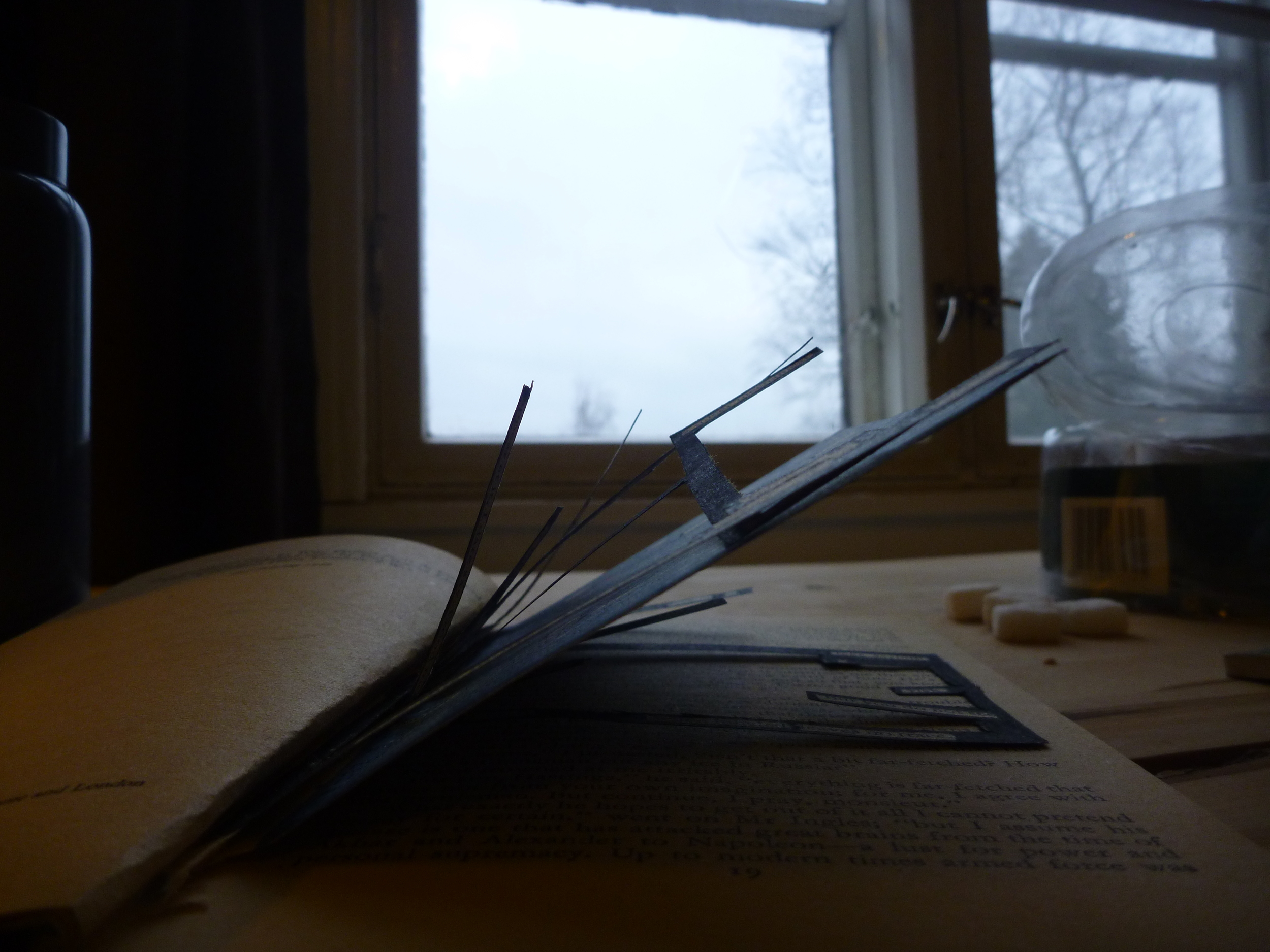 Over the past couple of weeks in residence here at Arteles, I’ve been inspired to experiment with cut-up poetry. I haven't spent much time exploring the technique before now, but it's always interested me. The impetus behind my recent experimentation was this: November’s artists-in-residence decided that we would all make artifacts to display at a local shop to promote an open studios night. We were hoping that, intrigued by our work, the local community would come along to Arteles to see more of what we have been working on.
The display was in a stall at a remarkably vibrant and busy flea market, LA Kirpparitaidemessut (LA Fleamarket). It’s a huge space in which locals hire stalls and sell their goods on a week-by-week basis, and it seems to function as a community hub in the relatively small town of Hämeenkyrö (birthplace, incidentally, of Finland's only Nobel Prize winner in literature [1939], Frans Eemil Sillanpää).
Over the past couple of weeks in residence here at Arteles, I’ve been inspired to experiment with cut-up poetry. I haven't spent much time exploring the technique before now, but it's always interested me. The impetus behind my recent experimentation was this: November’s artists-in-residence decided that we would all make artifacts to display at a local shop to promote an open studios night. We were hoping that, intrigued by our work, the local community would come along to Arteles to see more of what we have been working on.
The display was in a stall at a remarkably vibrant and busy flea market, LA Kirpparitaidemessut (LA Fleamarket). It’s a huge space in which locals hire stalls and sell their goods on a week-by-week basis, and it seems to function as a community hub in the relatively small town of Hämeenkyrö (birthplace, incidentally, of Finland's only Nobel Prize winner in literature [1939], Frans Eemil Sillanpää).
The plan was that we would make or re-purpose small objects and try to sell them, and also leave flyers about the open studios event.
As the only resident poet, I was a little worried. What on earth would I show? No one would buy a single poem, would they? Especially not one written in English.
In the days before, I had been listening to some of the other artists talk about interventions. In the art world, interventions are kinds of performance or conceptual art in which the artist takes a pre-existing space or thing and changes it—intervenes—and the intervention itself is the art.
In the spirit of such interventions, I decided to make a small poetry intervention. I would buy a book from LA, make blackout poems on some of its pages, and return it to LA for sale in its new form. The first challenge was finding an English-language book (any attempt to do this project with a Finnish-language book seemed destined to result in total nonsense, since I can’t read Finnish). I ended up with a 1960s reprint of Agatha Christie’s The Big Four (1927).
At first, I planned to simply black out sections of the page and leave behind a poem, like Austin Kleon’s lovely newspaper blackout poems. But as I began to experiment, I wondered what would happen if I actually excised parts of the pages. So I began cutting. As I did, I built different poems on different pages, but the cut-outs meant that poems could be read either separately or together. They formed one longer poem, and a series of shorter poems, all at once. And their format was partly dictated by how the reader interacted with the text, since some parts of the poems were obscured by other parts, depending on the position of the reader.
At times I was too hasty or clumsy with my scissors, and lost text that I had planned to keep (or accidentally blacked out part of a word with my marker). Then, my mistakes dictated that the poem became something else again. (Dadaist and cut-up fiend Tristan Tzara apparently wrote: "We have always made mistakes, but the greatest mistakes are the poems we have written".)
It was fiddly and surprisingly hard work to come up with a few pages of poetry, and I left the book basically intact after that. But I am definitely intrigued by the possibilities of the format.
The final "found" poem sprang out at me in advance of new, disappointing debates regarding asylum-seeker policy in Australia. With slightly altered punctuation, the poem reads:
They reckon it
a fake asylum

a suspect body.
We risk anything
but you do not see.
A body when inhaled
leaves no trace
When I was researching literary cut-ups, which necessarily led me to William S. Burroughs, I discovered a wonderful animation of Burroughs talking about cut-ups (and by some great fluke, it was made by a Finnish animator, Matti Niinimäki). Maybe Burroughs was right: maybe "when you cut into the present the future leaks out." Right now, I don't feel in any position to foretell the future. I am just thinking maybe when you cut into anything the past leaks out.
